Paul Henry, one of Ireland's most popular artists, explores the colorful and magical landscape of Connemara in a piece that was originally written in 1952.
Editor's note: In May 2022, our sister publication, Ireland of the Welcomes, celebrated its 70th anniversary. To mark the occasion, we dipped into our decades of archives and found incredible articles like this and others written by famous Irish figures such as Brendan Behan, Patrick Kavanagh, and the beloved Irish artist, Paul Henry.
One of the most extraordinary distinctions possessed by the West of Ireland is the unique spell it exerts - a subtle and powerful spirit of attractiveness to which even the most lethargic and sophisticated traveler invariably succumbs. This is the more extraordinary, and says not a little for the general receptivity of mankind to the subtler things of the spirit, as Ireland's more enduring and attractive qualities are not of the obvious kind which lies on, or close to, the surface and reveal themselves at a glance or a first casual encounter. This alluring charm has been felt by most people who have penetrated west of the Shannon; but it is in Connemara - that small choice district of West Galway - one seems to get closest to the secret source of this current of attractiveness.
Into this strip of the seaboard of the country have been collected many things of interest for all types of mind, and many interesting and beautiful things which are seldom found in combination, but when found they have the happy faculty of producing a harmony at once singularly satisfying and delightful. The scenery, the people, the sense of "color" in which the district is steeped - all charming things in themselves and all of them of an unusual quality - act and react, blend and separate to form new combinations against what for want of a more precise word we call the "background" of Connemara. This is her intimate, essential spirit, her air of remoteness, her aloofness, her unexpectedness. This "background", though an attraction of the less obvious kind, is the fairy cord that binds one, the invisible mesh of the enchanted net which falls over one in this delectable land.
Connemara is, roughly speaking, the district bound on the south by Galway City - "the Citie of Tribes" - and on the north by Leenane. Lapped all along her easter border by the waters of the romantic Lough Corrib: on the west the long rollers of the Atlantic sweep into a series of fascinating bays and mysterious silent fiords. The country is broken up by mountains and lakes and busy brown rivers: and the little scattered groups of cottages and isolated queer village and a final grace of intimacy to a landscape of exceptional charm.
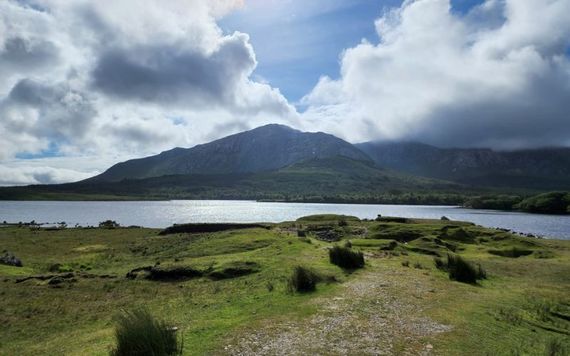
Connemara.
To leave the train at Galway City with the idea of working up through the country to rejoin the railway at Westport gives on the opportunity of exploring the most romantic of Irish cities. The traveler will here find himself in an atmosphere subtle and pervading which more nearly approaches that of the 18th century than any other place in Ireland. No one can deny the insidious magic of the old, grey, crumbling town. It was John Lynch, the author of Cambrensis Eversus, and a fugitive from Cromwellian ferocity, who sang in his exile, "As Jerusalem seemed to the Prophet Jeremiah the princess of provinces, the beauty of Israel, so thou, O Galway, dost to me appear of perfect beauty." And the city of John Lynch's rhapsody is the very largely essential to the atmosphere the city of today.
Looking upon Galway as one of the gates to the extreme west, one has a choice of two routes. One may either follow the coastline, which is more truly and intimately Connemara or travel up the sinuous river into Lough Corrib - famous in spring for its "dipping" and in winter for its countless wildfowl, as far as Maam, within easy reach of Recess, the core and center of Connemara. Another way is to enter at Westport.

Inchagoill Island on Lough Corrib.
Passing either down the Erriff Valley - a magnificent glen - or through Louisburg and the fine Delphi Pass, one emerges at the head of the superb fiord of Killary with Mweelread - the highest mountain in Connaught - guarding its entrance. From this point through the "Twelve Pins'' and their foothills and past numberless lakes we enter Connemara.
Here, from the summit of one of her higher mountains, the eye travels over the peerless country, dotted with innumerable little loughs beloved of the fisherman, over the gracious lines of her cloud-dappled hills, and the valleys where the purple shadows linker; over the scattered "clachans" - little handfuls of whitewashed toy houses - tucked away in the sheltered folks of the hills, to the coastline, bitten into the sandy bays guarded by islets of porphyry set in an opal and azure sea. Out of the sou'west a wisp of mist - a grey veil trailing from a grey cloud floating. in the blue - passes over the hills. Where it catches on a height it breaks is showers on the toy houses and passes on leaving the wet, sparkling eyes of the cottages laughing back to the sun.
At a turn of a lonely road among mountains - far from village or house - a woman comes down a rough track from the higher hills. Dressed in geranium-red homespun and with an orange head shawl, the turbulence of her color flames against the encircling mountains. She hangs on her foot for a second as she returns your salute. A wild grace in the carriage of her head, the beautiful softness of her voice, soft as the rains of her native hills, wraps you round like a caress. Her grey eyes, soft and kindly, hold yet a smoldering fire; the brooding mystery of her race is round like an aura. She passes by, coming from the mountain solitudes and going apparently to them again, a rare, aloof, dignified figure.

Are you planning a vacation in Ireland? Looking for advice or want to share some great memories? Join our Irish travel Facebook group.
Here in Connemara on a day when the wind blows from the west, the pale rose morning light turns to silver as the tumultuous high-flying clouds race over the mountains, their indigo shadows hurrying across the green of the uplands and the gold of the ripening harvest towards the distant plum-coloured hills. As the sun ascends the clouds scurry faster, and their shadows beat a quicker measure towards the horizon. The color flames and burns amount the hills; and the deep tarns set in a hundred carries - the surface of their waters curled over by the wind and reflecting the deep blue of the sky - glow like enamels, azure shot through with gold. The big clouds, typical of "The West", grow listless as the day declines. They come up slower still and more majestic, gathering color from the descending sun till as it dips beyond the sea they seem hardly to move, piling themselves up into airy cloud-built palaces glowing with reflected fire. The cool purple dusk creeps over the hills, while far in the west the day dies in a deep mauve seen through a shower of dust of gold.
*Paul Henry is best known as a painter of the Irish countryside, his paintings having been exhibited in Europe and the United States. He has also written extensively on the Irish scene. As a writer and painter, his work has largely been influenced by Connemara's mountains and lakes.
*This article was originally published in November 1952 in Ireland of the Welcomes.
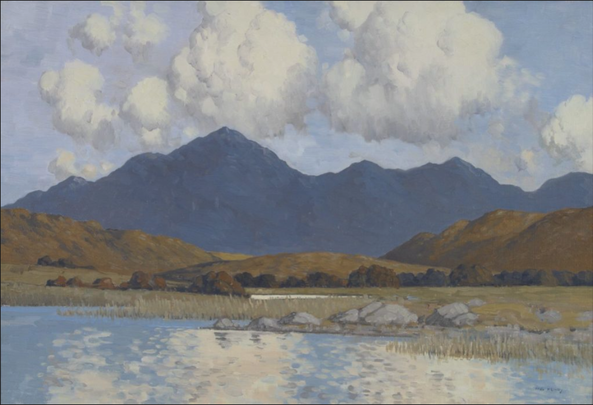
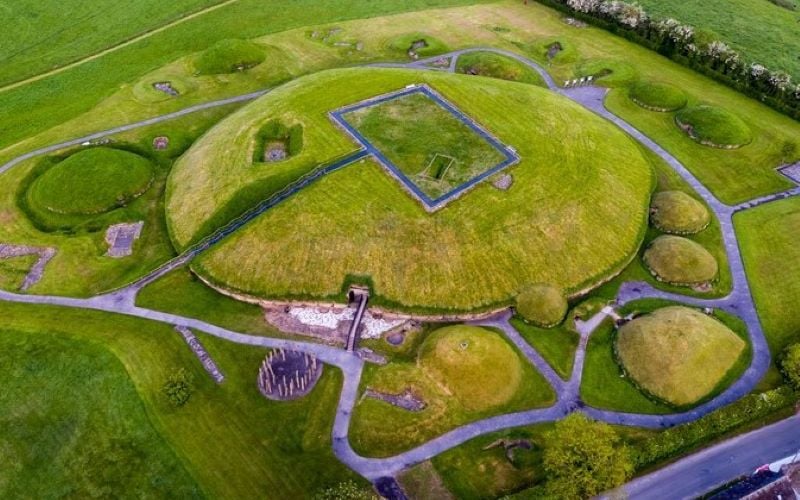
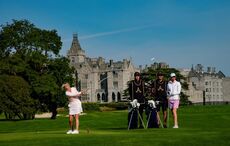
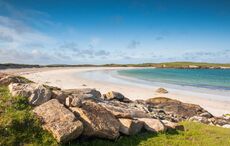
Comments